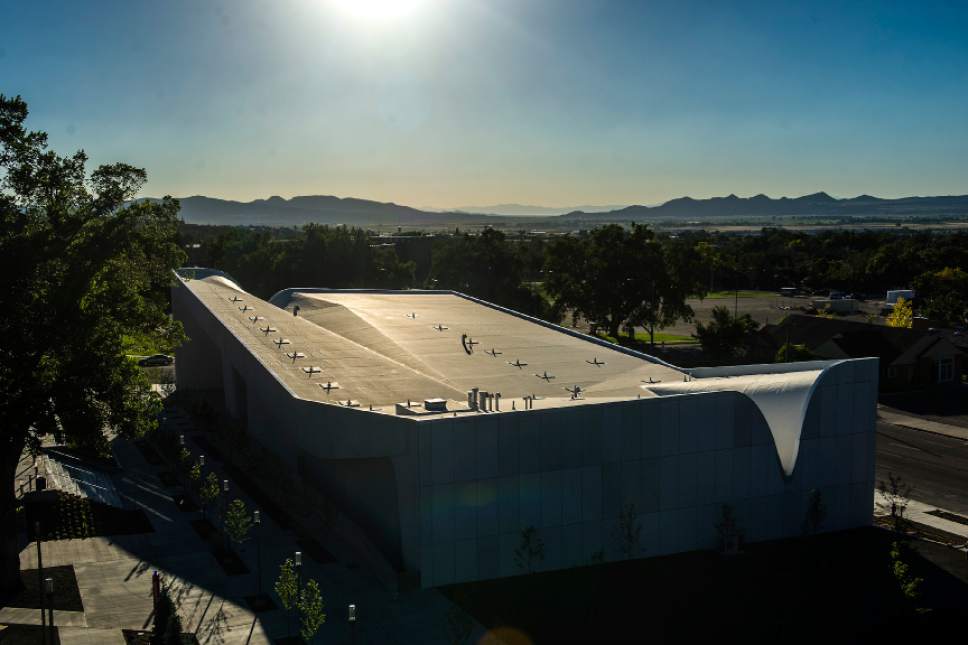This is an archived article that was published on sltrib.com in 2017, and information in the article may be outdated. It is provided only for personal research purposes and may not be reprinted.
Southern Utah University officials aren't quite sure why they lost more than 1,000 students between fall and spring semester this school year.
Some of the dip is being attributed to 286 students graduating early, administrators said, and current enrollment numbers may not account for students who register for classes throughout the year "pursuing individual professional development plans."
But SUU spokeswoman Ellen Treanor said the unusual decline this year — 1,050 between semesters in the 2016-2017 school year compared to 483 the prior year — has not affected on-campus offerings, residence halls or student-to-teacher ratios.
Losing students between fall and spring semester is common for schools across the country, due to a variety of factors. But unlike SUU's 2017 dip, most Utah universities' seasonal enrollment declines fall within a predictable range each year.
"It's just so consistent, it's just almost something you can count on that will be a phenomenon" each year, said David Buhler, Utah commissioner of higher education.
The trend is commonly attributed to incoming freshmen deciding to leave after struggling to keep their grades up in the fall semester, Buhler said, or to individuals who leave temporarily to work so they can afford school.
At the University of Utah — which loses around 4 percent of its enrollment between fall and spring semesters — students typically leave because they graduate early or to pursue a Mormon mission or military service after fall semester, said Mary Parker, the U.'s associate vice president of enrollment management.
That share of departing students is lower than the national average: a 4.9 percent decline between fall 2015 and spring 2016, according to the National Student Clearinghouse Research Center.
"Typically, spring enrollments are lower than fall enrollments, but it is important to recognize that this is not an attrition rate for individual students," according to the center. "Rather, the drop represents the net effect of fall student attrition, graduation, and [putting their education on hold], combined with new and returning spring student enrollments."
Still, U. officials are working to help as many students as possible remain enrolled through the year, Parker said, and to keep those who leave engaged with the school in hopes of encouraging their return.
The U. wants to focus not only on "recruiting, but also keeping students here and graduating," Parker said.
So, students who postpone their education are asked to complete a leave of absence form so U. officials can provide them continuous updates and monitor when they will return, she said.
For example, the university informs those students when they can register for classes and sign up for housing.
"We make sure we have a personal touch with those students to make sure we're in constant communication and making sure they know what needs to be done" to come back, Parker said. "Their process to come back needs to be seamless."
Weber State University lost the highest percentage of students of any Utah public school this year, with a nearly 18 percent drop.
But that number is fairly typically for the Ogden school, with such seasonal slips ranging between 15 percent and 18 percent in previous years.
Eric Amsel, the school's associate provost for academic programs and assessment, said the numbers are elevated because high school students taking classes sign up in the fall for yearlong courses: meaning, they don't sign up again in the spring.
With those students removed, Amsel said it brings the percentage drop down to between 5 percent and 8 percent.
But university officials still worry about the students who fall between the cracks, he said.
Many of these students come to Weber needing math and English remediation, Amsel said, so the school offers programs such as math tutoring to help them.
"We're very concerned about these students because we had them and they left us and we're wondering how we failed them," Amsel said. "So we have looked into ways of keeping them and getting them back."
astuckey@sltrib.com
Twitter: @alexdstuckey





